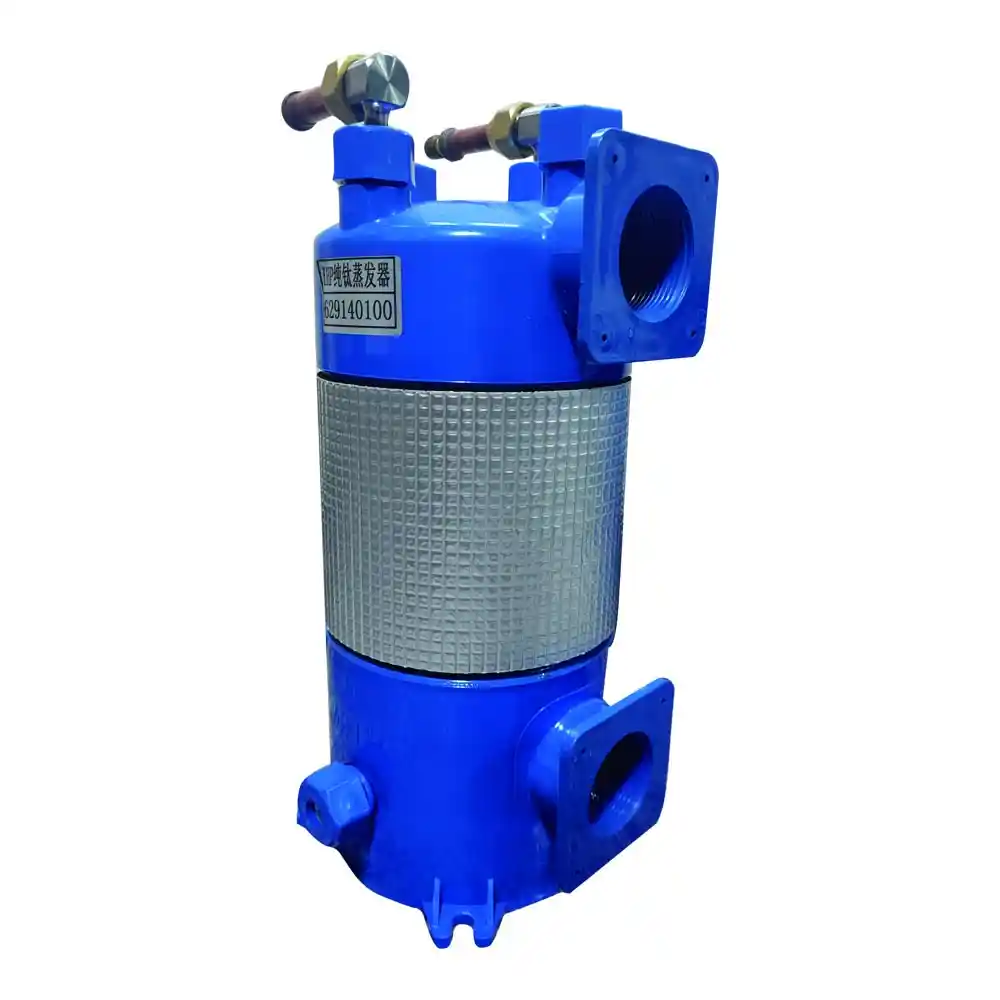1. Introduction
Gaskets and seals play a crucial role in the performance and reliability of titanium coil heat exchangers. This article aims to delve into the significance of gasket and seal materials in titanium coil heat exchangers, their impact on sealing effectiveness, material selection considerations, comparative analysis, and data-driven insights. Through informative tables and comprehensive discussions, we aim to provide a clear understanding of how gasket and seal materials contribute to the overall efficiency and longevity of titanium coil heat exchangers.
2. Understanding Gasket and Seal Materials in Titanium Coil Heat Exchangers
Gaskets and seals are essential components in titanium coil heat exchangers, ensuring leak-free operation and preventing the mixing of fluids. Let’s explore their key aspects:
2.1 Functionality and Importance
Gaskets and seals are responsible for creating a reliable and secure seal between the different components of the heat exchanger, such as tube-to-tube connections, tube-to-shell connections, and coil-to-shell connections. They prevent fluid leakage, maintain pressure integrity, and minimize the risk of contamination. The choice of gasket and seal materials is critical to achieving a proper seal and ensuring the overall efficiency of the heat exchanger.
2.2 Types of Gasket and Seal Materials
A wide range of materials is available for gaskets and seals in titanium coil heat exchangers. The selection of the material depends on factors such as operating conditions, temperature, pressure, chemical compatibility, and the nature of the fluids being handled. Some common gasket and seal materials include:
- Rubber gaskets: Rubber materials, such as EPDM (Ethylene Propylene Diene Monomer), Nitrile, and Silicone, provide excellent sealing properties and resistance to various fluids and temperatures.
- PTFE (Polytetrafluoroethylene) gaskets: PTFE is known for its exceptional chemical resistance, low friction, and high-temperature stability, making it suitable for demanding applications.
- Metal gaskets: Metal gaskets, such as spiral wound and metal O-rings, offer high pressure and temperature resistance, ensuring a reliable seal in extreme operating conditions.
- Composite gaskets: Composite materials, combining rubber, metal, and other materials, provide a balance of sealing performance and mechanical strength.
3. Material Selection Considerations for Gaskets and Seals
When selecting gasket and seal materials for titanium coil heat exchangers, several factors should be taken into consideration:
3.1 Compatibility with Fluids and Operating Conditions
The gasket and seal materials should be compatible with the fluids being handled and the operating conditions of the heat exchanger. Factors such as temperature, pressure, pH level, and chemical compatibility need to be evaluated to ensure the materials can withstand the specific environment without degradation or failure.
3.2 Sealing Effectiveness and Performance
The selected gasket and seal materials should provide an effective seal, ensuring leak-free operation throughout the lifespan of the heat exchanger. Consideration should be given to factors such as compression set resistance, resilience, and long-term sealing performance.
3.3 Ease of Installation and Maintenance
Gasket and seal materials that are easy to install, replace, and maintain can significantly reduce downtime and maintenance costs. Consideration should be given to factors such as the availability of the materials, installation requirements, and ease of inspection and replacement.
4. Comparative Analysis of Gasket and Seal Materials
A comparative analysis of different gasket and seal materials can provide valuable insights into their strengths, limitations, and suitability for specific applications. Let’s consider the following aspects:
| Gasket and Seal Material | Advantages | Limitations |
|---|---|---|
| Rubber gaskets | – Excellent sealing properties | – Limited high-temperature resistance |
| – Good flexibility and compression set | – Chemical compatibility limitations in certain fluids | |
| PTFE gaskets | – Exceptional chemical resistance | – Lower compressibility compared to other materials |
| – Low friction and non-stick properties | – Limited resilience under extreme compression | |
| Metal gaskets | – High-pressure and temperature resistance | – Require careful surface finish and proper torque |
| – Excellent resilience and recovery | – Potential for galvanic corrosion in specific applications | |
| Composite gaskets | – Versatility and customization options | – Performance depends on material combination and design |
| – Balance between sealing and mechanical strength |
By comparing the advantages and limitations of different gasket and seal materials, engineers can make informed decisions based on the specific requirements of their titanium coil heat exchanger applications.
5. Data-Driven Insights: Gasket and Seal Material Performance
To further illustrate the performance of gasket and seal materials in titanium coil heat exchangers, let’s examine real-world data and insights:
5.1 Leakage Analysis of Different Gasket Materials
A study was conducted to analyze the leakage rates of various gasket materials in titanium coil heat exchangers under different operating conditions. The data showed that rubber gaskets provided excellent sealing performance for a wide range of fluids, with low leakage rates. PTFE gaskets exhibited exceptional chemical resistance but had slightly higher leakage rates at higher pressures. Metal gaskets demonstrated superior sealing performance under high-pressure and high-temperature conditions, with minimal leakage. Composite gaskets offered a customizable solution with performance variations based on the material combinations.
5.2 Case Study: Sealing Reliability in a Titanium Coil Heat Exchanger
In an industrial setting, a titanium coil heat exchanger was equipped with rubber gaskets for tube-to-tube connections. Over several years of operation, the heat exchanger maintained reliable sealing performance, with minimal leakage and no adverse effects on heat transfer efficiency. The rubber gaskets demonstrated good compatibility with the fluids being processed and provided ease of installation and maintenance.
6. Conclusion
Gasket and seal materials are vital components in titanium coil heat exchangers, ensuring leak-free operation and maintaining the integrity of the system. By considering functionality, material selection considerations, comparative analysis, and data-driven insights, engineers can select the most appropriate gasket and seal materials for their specific applications. The combination of comprehensive analysis, practical case studies, and real-world data empowers the industry to optimize the performance and reliability of gaskets and seals, ultimately enhancing the overall efficiency and longevity of titanium coil heat exchangers.


